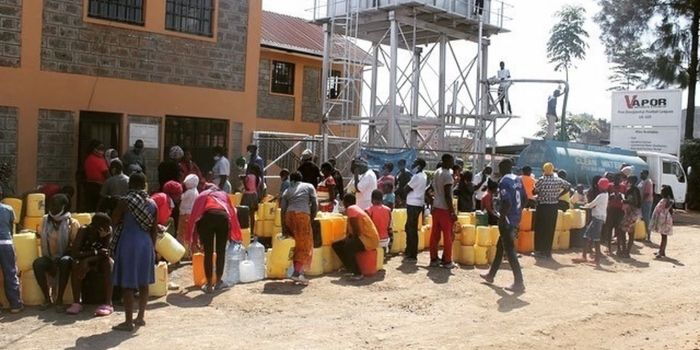Kenyans in all 47 counties are staring into prolonged water shortages after reports revealed that the level of water not reaching the homes and businesses in the country has increased to 60 per cent.
While speaking on Friday, Water and Sanitation Cabinet Secretary Eric Mugaa revealed that according to the Financial Year 2022-2023 performance report by the Water Services Regulatory Board, the level of Non-Revenue Water (NRW) stands at an alarming 60 per cent, far above the national average of 43 per cent.
According to the report, the water that does not reach the customer is lost through leakages, theft, outdated infrastructure, or inefficiency.
Expressing his concerns, the CS has called for urgent measures to address the high levels of water loss across the country before it plunges into a crisis.
Water and Irrigation Cabinet Secretary Eric Mugaa in a past event
Photo
Eric Mugaa
“No water service provider among the 47 counties has attained non-revenue water level within the acceptable benchmark of less than 25 per cent. This is a clear indicator that a lot needs to be done to increase operational efficiency,” CS Mugaa revealed.
The widespread inefficiencies in water management have resulted in significant losses before the water even reaches consumers, aggravating cases of water shortages and driving up costs in the country.
If the current inefficiencies in water management are not addressed, it could mean that many Kenyans will continue to experience water shortages.
In August, Water Principal Secretary Julius Korir revealed that water companies in the country lose about Ksh10.2 billion annually due to water wastage occasioned by poor infrastructure.
The Cabinet Secretary was speaking during the official launch of Lake Victoria South Water Works Development Agency Strategic Plan 2023-2027 in Kisumu County.
He, however, expressed hope in the sector after noting that despite the challenges, the sector has made major strides.
Between 2019 and 2022, the government mobilised approximately Ksh36 billion to implement water projects in various regions.
With these projects and efforts, the government aims to boost water coverage from 53 to 80 per cent and sanitation coverage from 17 to 43 per cent.
A person drinking water from a water tap.


